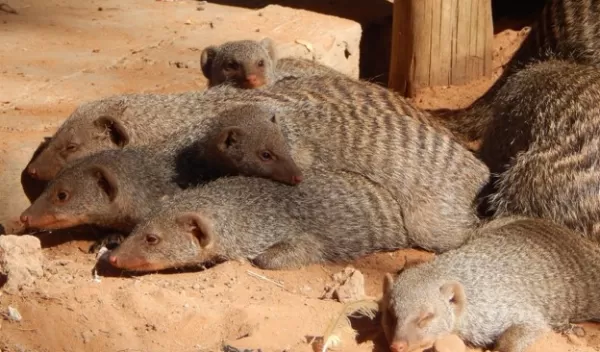
Banded mongoose study reveals how behavior and landscape influence disease spread
With outbreaks of infectious diseases making headlines around the world, scientists are under pressure to understand the drivers that influence the transmission of pathogens.
A new study led by Kathleen Alexander of Virginia Tech and colleagues explores the ways landscape can influence animal behavior, fostering dynamics that encourage or limit the spread of infectious diseases.
By observing banded mongoose populations across a range of environments in Botswana, the researchers were able to gain insights into how land type and animal behavior interact to influence the spread of a novel tuberculosis pathogen transmitted through olfactory communication behaviors.
The study, published in the journal Frontiers in Ecology and Evolution, was funded by an award from the National Science Foundation's Ecology and Evolution of Infectious Diseases program.
"Banded mongoose use scent marking to communicate information to other individuals, a central behavior in this and many other species," explained Alexander. "Scent marks are deposited into the environment and contain odor signals that convey information from one mongoose to another.
"A novel tuberculosis pathogen we've discovered has essentially hijacked mongoose communication pathways: As they communicate information with other mongoose, they can also transmit the tuberculosis pathogen."
Alexander and her colleagues used radio collars and camera traps with remote sensors in den sites to monitor mongoose behavior. The result was a comprehensive data set of mongoose behavioral interactions in a range of landscape types.
"What we found is that land type significantly influences the interaction of vigilance -- watching out for predators or competitors -- with scent marking behavior," Alexander said. "This has the potential to change pathogen transmission and, where scent marking is elevated, create superspreading landscapes.”
Infectious diseases will continue to emerge, she said, “as we have seen again with the novel coronavirus. Our results suggest an urgency in understanding how landscape types influence animal behavior, and how these interactions might increase or decrease the potential for disease to be transmitted between animals and humans."
Added Sam Scheiner, a program director in NSF's Division of Environmental Biology, "Studying how animal behavior affects disease transmission can provide crucial insights into how changes in human behavior affect our chances of being infected."


